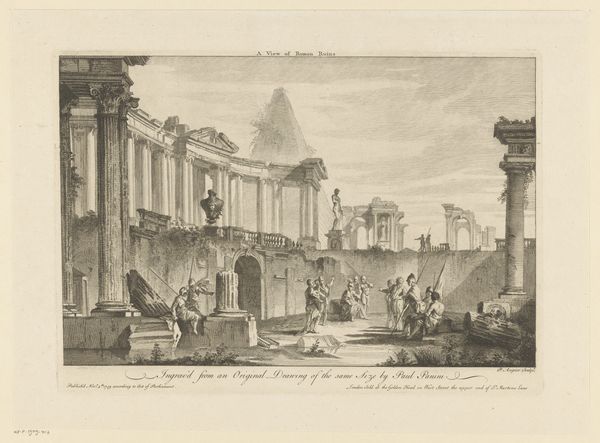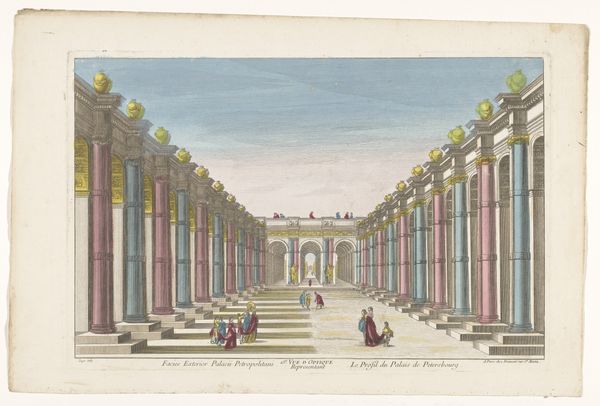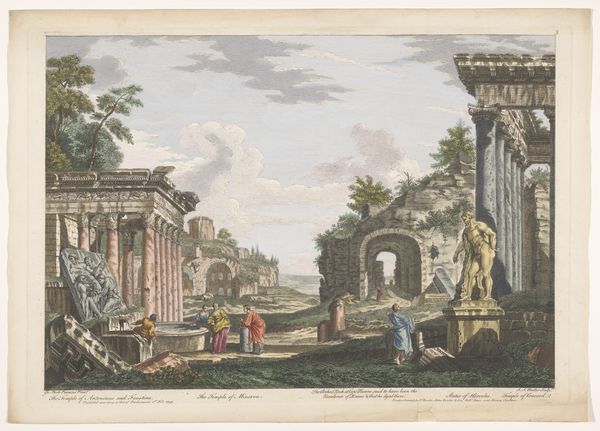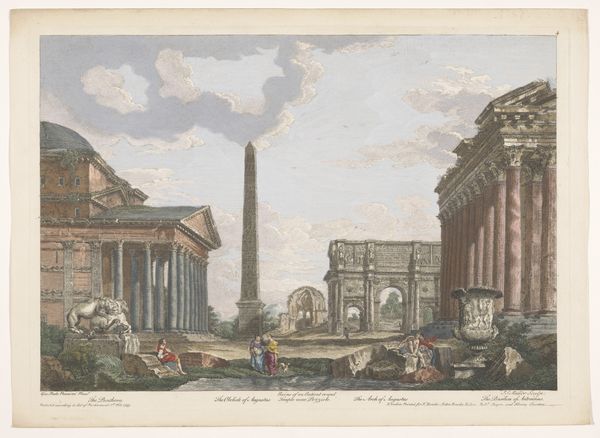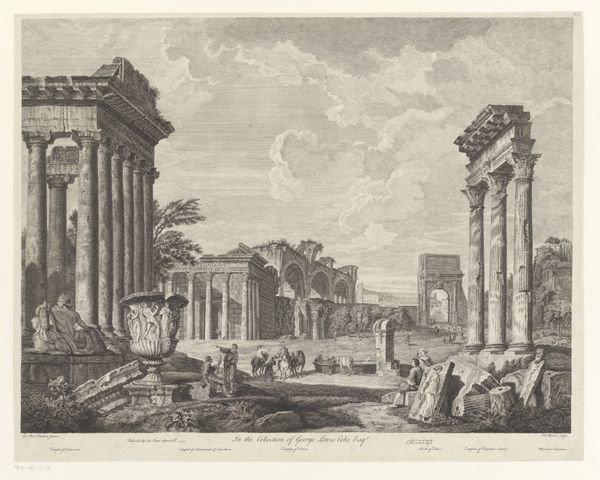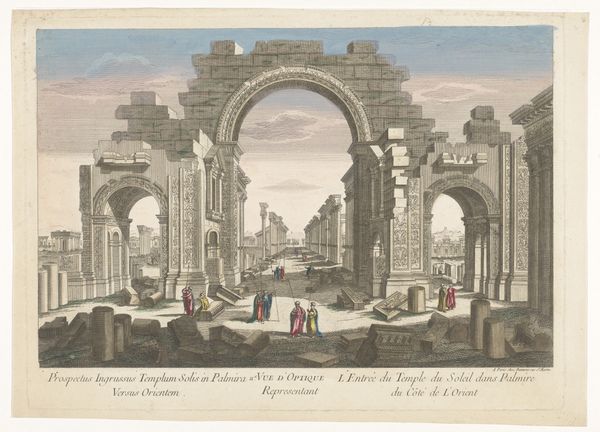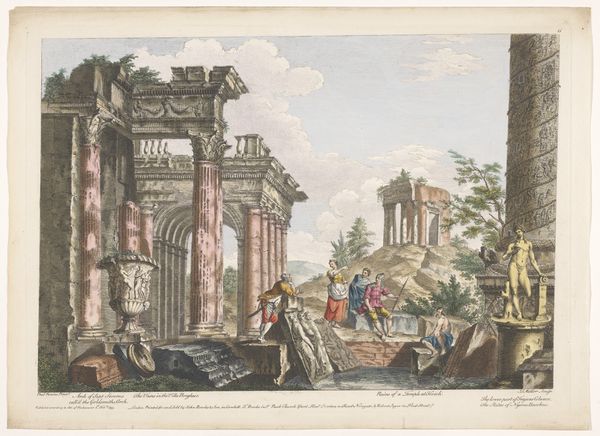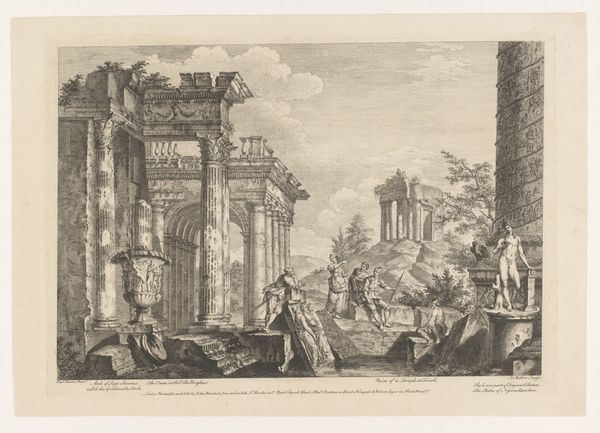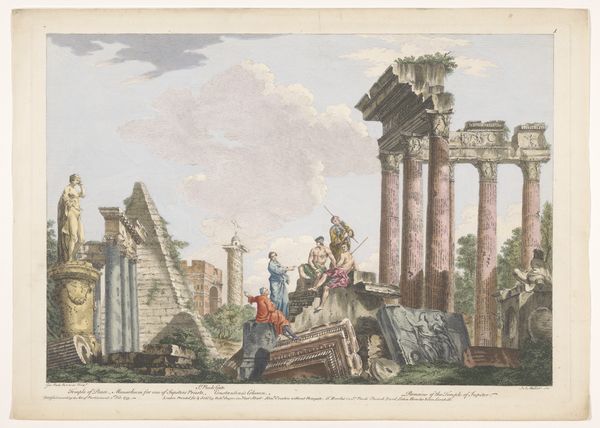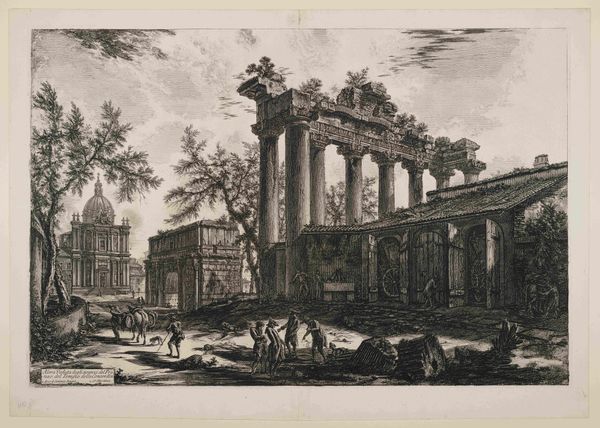
painting, print, watercolor, engraving
#
painting
# print
#
landscape
#
classical-realism
#
watercolor
#
coloured pencil
#
cityscape
#
history-painting
#
engraving
#
rococo
Dimensions: height 264 mm, width 372 mm
Copyright: Rijks Museum: Open Domain
Jean-François Daumont created this print of a ruined colonnade in Rome sometime before 1775. It presents a vision of the ancient world filtered through the lens of 18th-century Europe. The image speaks to the fascination with classical antiquity that gripped much of Europe at the time. The ruins are not merely depicted; they are reimagined as a stage for contemporary life, with figures in what appears to be Roman military garb populating the scene. The creation and distribution of such prints were deeply embedded in the cultural and economic structures of the time. The rise of the Grand Tour made Rome a must-see destination for the wealthy. Prints like these became popular souvenirs, reinforcing a sense of cultural capital and classical education. This print participates in constructing and commodifying an idea of the past for a specific audience. To fully appreciate its meaning, we can look at the history of printmaking, the Grand Tour, and the archaeological discoveries that shaped 18th-century perceptions of Rome. Through such investigations, art history reveals the intricate dance between past and present, and the social forces that shape our understanding of both.
Comments
No comments
Be the first to comment and join the conversation on the ultimate creative platform.
